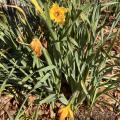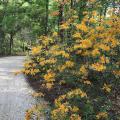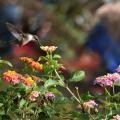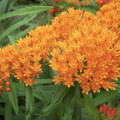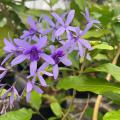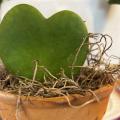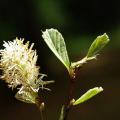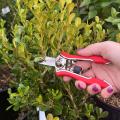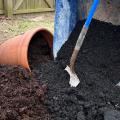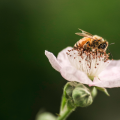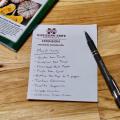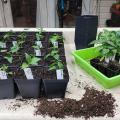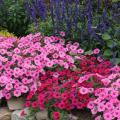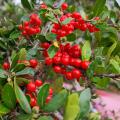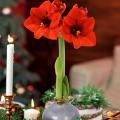News Filed Under Flower Gardens
For a few short weeks, daffodils grace the planet with their beauty and remind us of warm weather right around the corner.
Azaleas are starting to produce their beautiful flowers in my landscape, and it is a welcome sight after a few months of cold weather. Like many of your azaleas, mine had some tender, new growth that suffered cold damage from the freezing temperatures we got last December. I hope you did the right thing and did not do any pruning to your azaleas yet.
It’s time once again to clean those hummingbird feeders and cook up the sugar water. In Mississippi, we can set our feeders out in early March as hummingbirds are migrating north from southern climes. Providing food in backyards is important, as these birds need to consume half their body weight each day.
I woke up to a dusting of yellow pollen on my car this week, the true sign that spring is on its way! Several flowers are blooming, making the world a little more vibrant after a cold, gray winter.
Go down the garden section of any home improvement store, and you will find a dizzying array of fertilizer options available to help you reach your garden goals. But which one should you choose?
The numbers on each bag of fertilizer mean something different, so let’s take some of the confusion out of this common problem.
After a dreary winter comes every gardener’s favorite time of year: spring! Here are some hot plants you should try this season. Some varieties are fairly new, while others are making quite a comeback.
Valentine’s Day is a time for people around the world to profess their love for someone or, like most of us, our love for our gardens!
January can feel like a long month for me. The holiday bustle is over, cold temperatures settle in, and the sky turns grey for days on end. But it doesn’t stay that way for long.
BILOXI, Miss. -- Gardening and floral design enthusiasts and professionals can enjoy a public lecture by Martha Whitney Butler, a Bay St. Louis floral designer. Butler will deliver a floral design demonstration that includes techniques based on sustainable floral design practices, as well as her experience in art history and the use of antique and vintage floral containers.
Exceptionally low temperatures this winter caused more cold damage than our typical, milder winters. But try not to panic and prune as soon as you see damage. It is best to let the plant heal and recover what healthy tissue it still has, and then prune the dead parts a little later.
As you walk around the landscape in January and look forward to the joy of starting a flower or vegetable garden, don’t overlook what you are stepping on. Healthy, productive plants require healthy soil. While soil may not be as eye-catching as narcissus or redbud flowers, it does require your attention.
All of us gardeners are super eager to get things moving in our landscape. And who wouldn’t be, with sunny, 70-degree January days? Of course, everything looks horrible from the “freezemageddon” that we experienced just a few weeks ago. It is still too early to start pruning and cleaning up our plants, but I must confess that I don’t always follow the rules. There may be a few plants that I just could not look at anymore.
Pssst…You know you don’t have to be a beekeeper to help support honey bees, right?
I don’t know about you, but I have been bombarded with seed catalogs this winter. Since about age 12, one of my favorite hobbies has been looking through catalogs at all the new plants.
Some new plants have forever changed the horticulture industry, while others disappear after just one season.
I usually write the Southern Gardening column about how the different seasons change the look of our landscapes and gardens, what seasonal plants look great and when it’s time to transition with new plants for the next season. Just like in the garden, a career has a season for everything, and there comes a point when you realize it’s time for a change.
Most gardeners start planning their flower and vegetable gardens after the first of the year. This makes sense, as cabin fever from the winter months is compounded by a case of gardening fever due to the appearance of garden catalogs.
At the end of each year, I like to look back at what were some of the better performers in my home landscape and in my travels with Southern Gardening. I obviously don’t have enough room here to mention all the great plants I’ve seen and grown in 2022, but I think these four were the cream of the crop.
One of the most common questions I get his time of year concerns how to have landscape color from plants that are not annuals, like pansies, violas and dianthuses. A couple of weeks ago, I mentioned one such plant -- winter cassia -- that adds winter color to landscapes. Now, I want to suggest a Southeastern native shrub that is attractive and has a surprise use.
This fall and winter, I’ve been going back to look at some of my really, really favorite plants that I’ve talked about over the years as host of Southern Gardening with the Mississippi State University Extension Service. I’ve enjoyed hearing reports from garden centers that a particular Southern Gardening column created a run on plants I mentioned. One in particular brings back some fun memories: the blue butterfly plant.
My favorite definition of a horticulturist is paraphrased as “We make plants do what we want, when we want them to do it.” The holiday season is the perfect time to show off these skills, and a prime example is the poinsettia. This plant “blooms” in its native Mexico around Christmas. But using science and plant physiology, we have poinsettias colored up from late October through the Christmas holidays.

